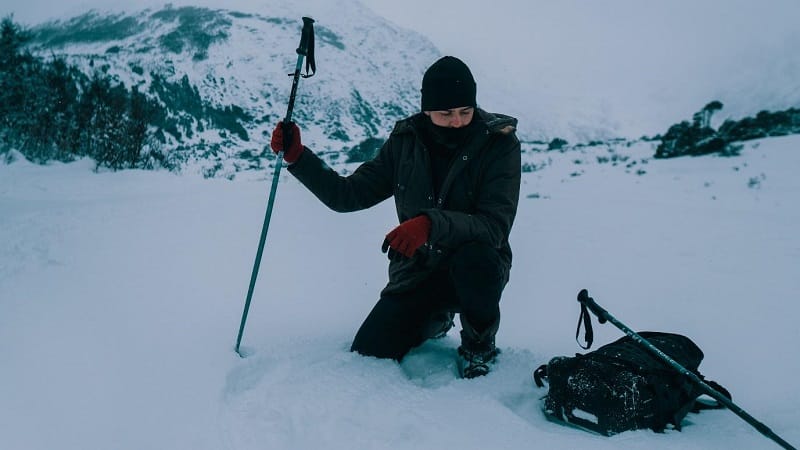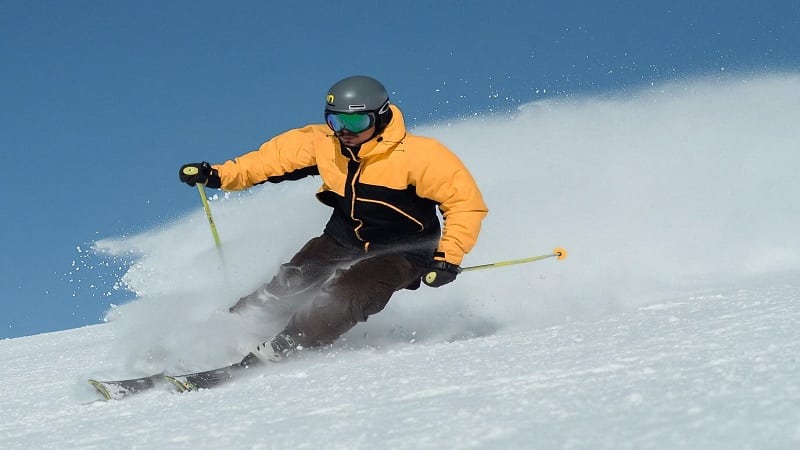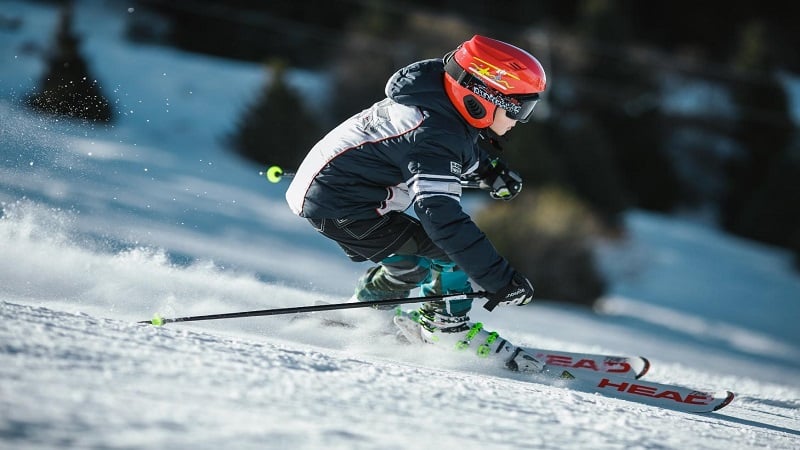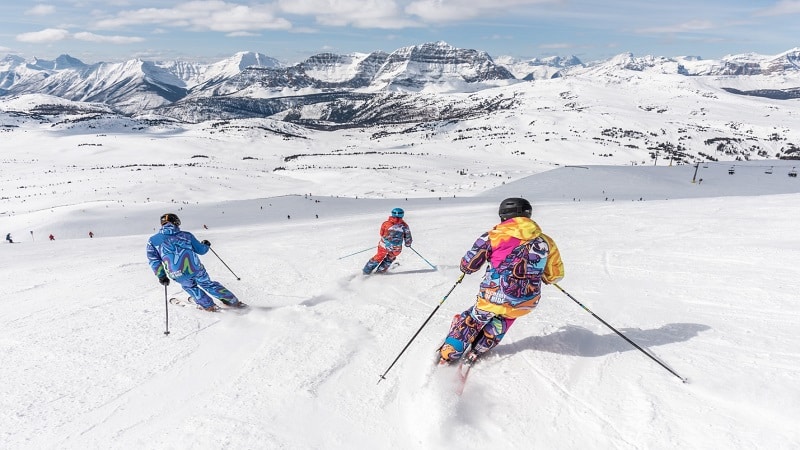Are you a first-time skier looking forward to whipping down the slopes and feeling the fresh, cold wind in your face? Well, before you can get on the slopes, you need to get all the right equipment, and the essential equipment you’ll need for skiing are skis and ski poles.
Did you know that ski poles come in different sizes and materials? As a beginner, you need to worry most about the size of your ski poles and whether or not they are a good fit. You can start to experiment with the materials the ski poles are made with once you’re a bit more experienced.
Read ahead to learn all about finding the right size ski poles for yourself and which size is better suited for different skiing.
The Sizes of the Different Components of Ski Poles
A ski pole has three basic components: the pole, the strap, and the basket. When buying a pair of ski poles, you should check all three components and whether they are the right size for you. Let’s take a closer look at how each of the three components should fit and feel.
The Pole Length
Most people would suggest that you follow a general ski poles size chart to find out the length of the poles that you should go for. Most poles on the market are sized in two-inch or five-centimeter increments, starting at 30 inches/75 centimeters and going up to 56 inches/140 centimeters in length. These lengths are determined by a mathematical formula as follows:
Body size (in centimeters) x 0.7 = ski poles length (in centimeters)
While you could follow the ski pole size chart and find a suitable length for yourself, we suggest going to a store and trying different ski poles and seeing how well they suit you. You might find yourself buying the correct sized poles according to the size chart, but then when you actually get on the slopes, you may find that a slightly longer or shorter pair would have felt more comfortable and natural.
Here is what you should do when you’re at a ski gear store and trying to find the right-sized poles for skiing. First, make sure you’re wearing shoes or your ski boots so that your height is the same as it would be on the slopes. Then grab a pair of poles upside down so that the straps are facing the floor and you’re holding the poles under the basket. The tip of your thumb should be in contact with the basket. Once you’re holding the poles in this way, ideally, your elbow should be at a 90-degree angle.
If the angle is less than 90-degrees, repeat the process with a shorter pole. If the angle is greater than 90-degrees, try a longer pole.
The Strap Size
The straps attached at the top of the poles are there so that if you accidentally let go of the poles while skiing, you don’t lose them in the snow and they stay planted upright. Some ski poles come with detachable straps, while others are permanently attached.
For the straps to fit you just right, your hands should go up through the straps. Your hands should then grip the strap around the top of the poles. The straps should not be so long that you have trouble gripping them tightly, but instead, they should be snug against your wrist. On the other hand, they should not be so tight as to cause discomfort.
The Basket
The basket is the disk towards the bottom part of the ski pole. Unlike the pole length and the strap size, the size of the basket does not depend on your body size but rather the kind of skiing you want to do and the type of terrain you’ll be skiing on.
Since the main purpose of the basket is to stop the ski poles from sinking into the snow, you should have a wider basket for light, powdery snow and a smaller basket for hard-packed or groomed slopes. Some ski poles come with detachable baskets of different sizes so that you can switch them out depending on the kind of terrain you’ll be skiing on.
Different Poles Are Better for Different Kinds of Skiing
After checking the size of the ski poles according to your body size, the next thing to keep in mind is the usage. What kind of skiing will you be doing with these ski poles? Let’s see what size ski poles are best suited for different kinds of skiing.
Alpine Ski Poles
For Alpine skiing, you should ideally choose ski poles that will help you keep your balance while descending the slopes and allow you to take short turns. If you’re skiing faster, you should choose longer poles. Additionally, poles with a slight curve are better for giving you a stronger thrust during descent.
Ski Poles for Kids
Ski poles specially designed for children are shorter to match their heights and are also thinner. They have narrower grips and smaller straps as well.
Check out the Salomon Kid’s Brigade Ski Poles (ASIN: B07MY2QKQV) that are 33 inches long and well suited for kids. The Leki Racing Kids Ski Poles (ASIN: B08GQ6TFWL) are also a good choice and come in size 40 inches.
Ski Poles for Free Riders
Free riders ski on different kinds of slopes and terrains. The best choice for free riders would be telescopic poles that can be adjusted in size. Longer poles would be better for uphill ascents, while shorter poles can be more convenient for skiing downhill.
A great pair of telescopic ski poles are the WSD Telescopic Ski Poles (ASIN: B01MG3WC6K) which can be adjusted in height from 45 inches to 53 inches.
Our Final Thoughts
So, do you have a better idea of how to choose the right size of ski poles for your first time skiing? While you can look at a size chart and order an appropriately sized pair of ski poles online, we would also suggest that you go to a ski equipment store and check out different pairs to find a comfortable fit.
Keep in mind the size of the poles compared to your body size, as well as the kind of skiing you plan on doing.

















